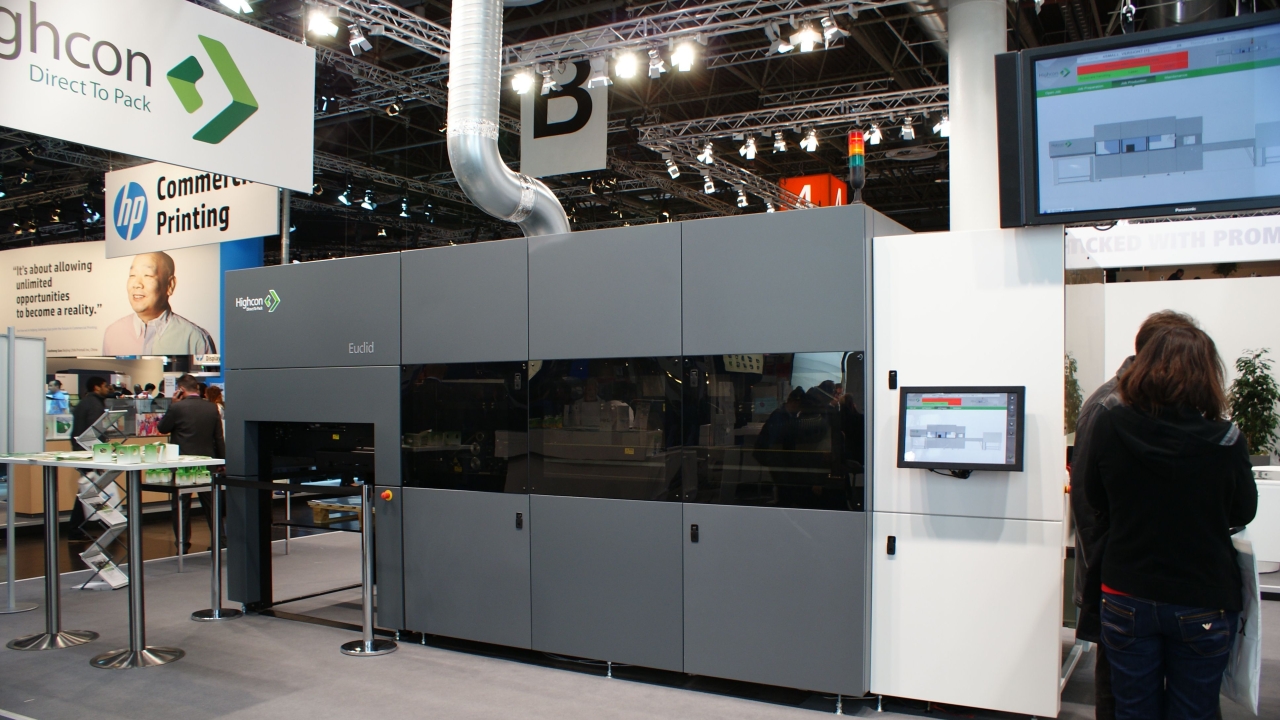Digital solutions set to transform package printing

Mike Fairley details his recent visit to Israel to talk with HP, Highcon and Landa about digital technologies that will transform the package printing market
One of the highlights of the recent Drupa was the launch of new digital technology that heralds a completely new future for the world of package printing.
Digital presses developed uniquely for sheet-fed folding cartons; digital web-fed presses for flexible package printing applications. Add to that the latest technology for digital finishing of cartons using laser cutting and digitally prepared scoring rules, and the future for the package printer starts to look exciting.
Yes, all of this was shown at Drupa, but there are certainly printers and converters who wonder whether this new technology is a complete reality? How long before it is available on the market? What are the timescales and expectations?
It was to answer some of these questions that Mike Fairley (pictured, below on the right with Benny Landa, center), international publishing director of Package Print Worldwide, and Tarsus labels and package printing group managing director Roger Pellow (pictured, below on the left), recently visited Israel to view the facilities and talk with senior executives at Landa, Highcon and HP.
There is little doubt that the technology is more than a reality. Interest from the industry in these new solutions is immense. Some companies have already placed letters of intent for the first production machines, or to be beta sites.
Landa nanographic presses
On the carton side, the Landa S10 B1 sheet-fed folding carton nanographic press will undoubtedly be a winner. Benny Landa’s history and reputation has already attracted considerable mileage for his nano printing process and seeing the machines being built and prepared ready to undergo testing and trials make it all the more real.
 The oversize user touchscreen interface envisages a new future for the carton industry – and will almost certainly begin to influence the future design of conventional printing presses.
The oversize user touchscreen interface envisages a new future for the carton industry – and will almost certainly begin to influence the future design of conventional printing presses.
The Landa 1,020mm web press for flexible packaging with a speed of up to 200m/in and able to handle a wide range of plastic films from 12 microns up to 250 microns, as well as paper, metalized PET, aluminium foils and cellophane – and print in up to eight colors – will surely create its mark in the years to come, especially when the machine is claimed to have half the carbon footprint of a conventional flexo press.
Trials and testing of both the carton and flexible packaging machines are expected to take up much of the coming year before finally being available in the market place. A fully commercial launch is anticipated for Interpack 2014.
HP Indigo
Meanwhile, at the nearby Hewlett-Packard facility, the HP Indigo 30000 digital folding carton press and the HP Indigo 20000 flexible packaging press are also being built and prepared for trials, testing and final market qualifying.
Capable of running over 20 different jobs per shift on any 200-600 microns substrate, the press will offer carton producers higher production efficiency and performance.
Similarly, the HP Indigo 20000 digital web printing solution for flexible packaging seems poised to transform film converting. Designed for high performance, high production, 24/7 printing, the press has the agility to change color sequence and colors on the fly with a minimum of overhead at a maximum of 45 linear m/min.
Like the Landa press, the HP Indigo machines will be undergoing extensive testing and qualifying before entering the market during 2013.
Highcon
Complementing the Landa and HP Indigo developments in folding carton digital presses, Highcon is also looking to transform the folding carton market by making it more efficient, flexible and cost-effective through the use of digital cutting and creasing. Again, like the other two companies, the new machines are now being built and prepared for testing, trials and market launch in the coming year.
It’s certainly impressive to see how the Highcon DART polymer is written onto a DART foil to instantly produce high-quality creasing rules in a matter of minutes with no need for traditional dies.
 Cutting and creasing information is received from DXF files from standard pre-press software into Esko ArtoisCAD. The whole process ready to start production takes around 15 minutes, with running speeds of up to 1,500 full-size B1 sheets per hour.
Cutting and creasing information is received from DXF files from standard pre-press software into Esko ArtoisCAD. The whole process ready to start production takes around 15 minutes, with running speeds of up to 1,500 full-size B1 sheets per hour.
The Highcon Euclid supports output from both conventional and digital presses and looks set to enhance profitability for short to medium carton run lengths.
While it is likely to be the end of 2013 and even into 2014 before these new generations of packaging printing and finishing machines begin to be installed, there is no doubt that they will have a considerable impact on the future of carton and flexible packaging production, perhaps driven to a large degree by the changing demands and requirements of brand owners – as they already have in the label industry.
It will be interesting to see how the folding carton and flexible packaging sectors evolve over the next few years.
Read more on these technologies in the next issue of Package Print Worldwide , which you can receive for free by registering here.
Read more from Mike Fairley here
Read more on HP Indigo here
Read more on Landa here
Read more on Highcon here
Read more PPW features here
Read more from the Middle East here
Stay up to date
Subscribe to the free Label News newsletter and receive the latest content every week. We'll never share your email address.

